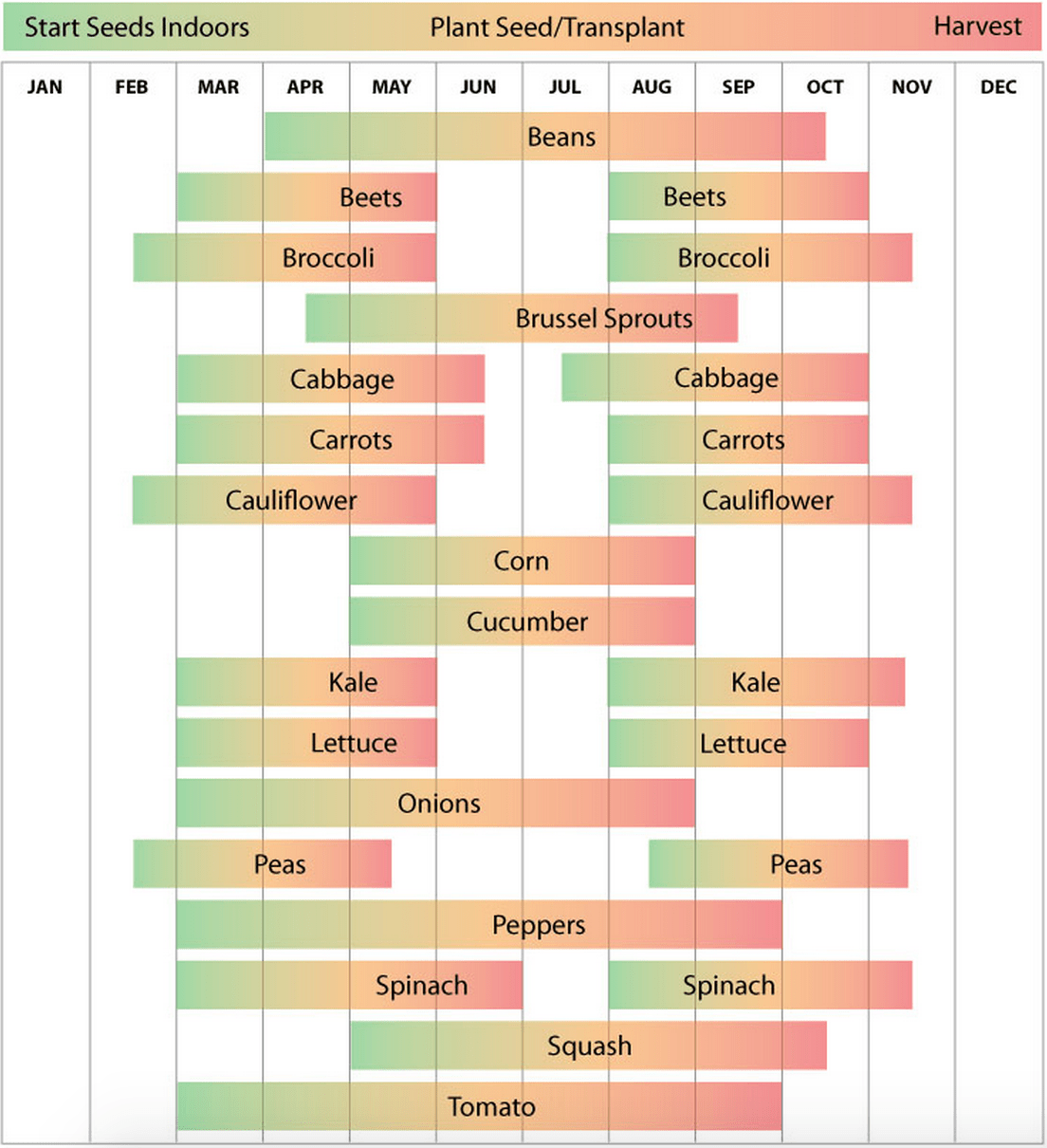Unearthing Autumn's Bounty: A Guide to Fall Gardening in Ohio
Imagine crisp autumn air, the scent of decaying leaves, and the vibrant hues of changing foliage. Amidst this seasonal tapestry lies a unique opportunity: the chance to cultivate a flourishing fall garden in Ohio. But this venture requires a delicate dance with nature, a careful consideration of timing and temperature, to ensure a bountiful harvest before winter's embrace.
The question of when to initiate this autumnal agricultural endeavor is paramount. The success of a fall garden in Ohio hinges on understanding the state's distinct climate and the first frost date, which typically falls between mid-October and early November, varying across the state's diverse microclimates. This date marks the point beyond which tender plants succumb to freezing temperatures, signaling the end of the growing season for many crops. Therefore, calculating backwards from the estimated first frost is crucial for determining the ideal planting window.
Historically, fall gardening has played a vital role in Ohio's agricultural landscape, providing sustenance through the colder months. Early settlers, attuned to the rhythms of the land, recognized the potential for extending the growing season and preserving the harvest for winter consumption. This tradition continues to resonate with modern gardeners, who appreciate the fresh, locally grown produce that a fall garden provides.
A primary consideration in planning an Ohio fall garden is selecting appropriate crops. Certain vegetables thrive in the cooler temperatures of autumn, while others struggle to mature before the first frost arrives. Hardy vegetables like kale, spinach, lettuce, and root crops like carrots and beets are well-suited for fall planting. These resilient varieties can withstand light frosts and even improve in flavor after exposure to cold temperatures.
Successfully establishing a fall garden in Ohio involves more than just choosing the right crops. The soil, having endured the heat of summer, often requires revitalization. Amending the soil with compost or other organic matter enriches its nutrients and improves its structure, creating a healthy environment for fall plantings. Consistent watering is also essential, especially during periods of dry weather, to ensure adequate moisture for optimal growth.
Several benefits accompany the establishment of an Ohio fall garden. The cooler temperatures often lead to fewer pest and disease issues, reducing the need for pesticides and other interventions. The milder weather also makes gardening a more enjoyable activity, offering a respite from the summer's intense heat. Furthermore, extending the growing season provides a continuous supply of fresh, homegrown produce well into the autumn months.
Advantages and Disadvantages of Fall Gardening in Ohio
| Advantages | Disadvantages |
|---|---|
| Fewer pests and diseases | Shorter growing season |
| Cooler gardening temperatures | Risk of early frost |
| Extended harvest season | Some crops may not mature fully |
Five best practices for successful fall gardening in Ohio include:
1. Know your first frost date: This crucial information dictates your planting schedule.
2. Choose appropriate crops: Select varieties that thrive in cooler temperatures.
3. Prepare the soil: Amend with compost or other organic matter.
4. Water consistently: Provide adequate moisture, especially during dry periods.
5. Protect from frost: Use row covers or other methods to extend the season.
Frequently Asked Questions about Fall Gardening in Ohio:
1. When should I start planting my fall garden? Calculate back from the first frost date based on the crop's maturity time.
2. What are the best vegetables for a fall garden in Ohio? Hardy greens, root crops, and some brassicas are good choices.
3. How do I protect my plants from frost? Row covers, cold frames, or even cloches can offer protection.
4. Can I plant seeds directly in the fall? Some crops, like spinach and lettuce, can be direct-sown, while others benefit from starting indoors.
5. How much should I water my fall garden? Water consistently, especially during dry periods, to keep the soil moist.
6. What are some common pests in a fall garden? Aphids, slugs, and snails can be problematic.
7. How do I prepare my soil for fall planting? Amend with compost or other organic matter to improve soil structure and fertility.
8. When should I harvest my fall crops? Harvest times vary depending on the crop, but generally before the first hard frost.
Embracing the opportunity to cultivate a fall garden in Ohio is to connect with the cyclical rhythm of nature. From the careful planning and selection of appropriate crops to the nurturing and harvesting of the autumn bounty, fall gardening offers a unique and rewarding experience. By understanding the nuances of Ohio's climate and implementing best practices, gardeners can savor the fresh flavors of homegrown produce well into the cooler months, extending the season's bounty and reaping the rewards of their autumnal endeavors. So, take advantage of the crisp autumn air and plant your seeds for a thriving fall garden in Ohio. The rewards are well worth the effort.
Boat lift canopy kits shielding your vessel in style
Unveiling the mystique a guide to royale high mals tier lists
Unlocking the potential of small home plans under 1000 sq ft














